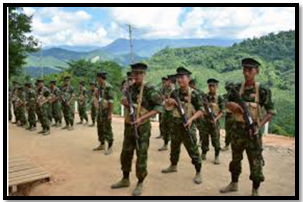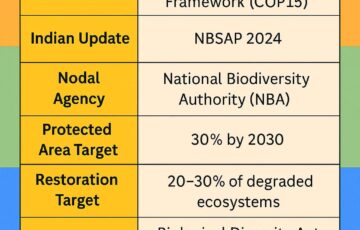THE DIFFERENT ARMED GROUPS OF MYAMMAR
Why in News ?
Myanmar’s military faces persistent resistance from Ethnic Armed Organizations (EAOs) and groups like the People’s Defence Force (PDF).
Source- TH
About the news –
- The Brotherhood Alliance, including the Arakan Army (AA), Myanmar National Democratic Alliance Army (MNDAA), and Ta’ang National Liberation Army (TNLA), has made significant territorial gains.
- Strategic locations in Shan State and border trade routes with China have been captured by groups like the Kachin Independence Army (KIA).
- Regional Dominance:The Arakan Army controls large areas in Rakhine State, impacting local governance and resources.
- Peace in Rakhine is crucial for infrastructure projects and handling the Rohingya crisis.
- Southern Advances:EAOs like the Karen National Union (KNU) have captured key towns along the Thailand border, affecting military supply lines.
- National and Regional Implications:Bangladesh’s Prime Minister Sheikh Hasina has expressed concerns about separatist movements along the Myanmar-Bangladesh border.
- EAOs aim for federal democracy rather than secession, advocating maximum autonomy within a unified state.
- Ethnic and Territorial Complexity:Myanmar’s complex ethnic landscape includes overlapping territories and mixed urban populations.
- Disputes over ethnic boundaries and homelands complicate peace efforts.
- China’s Influence:China engages with various Myanmar actors, supplying military equipment and influencing ceasefires.
- China’s dual support for the military and EAOs aims to maintain leverage and ensure regional stability.
- India’s Potential Role:India can offer its experience in federal frameworks and peace agreements to help Myanmar navigate its internal conflicts.
- Need for a New Framework:To transcend the current dynamic, stakeholders need to discuss a new constitutional framework that integrates federalism and democracy.





